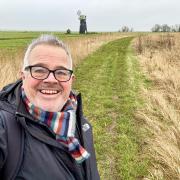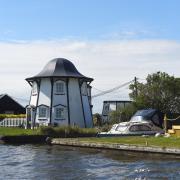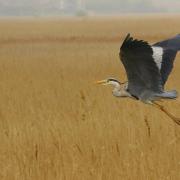Visit the Brecks in spring and you’re sure to see one of the UK’s most well-loved creatures, the rabbit – an animal familiar from the books of Beatrix Potter and Richard Adams’ Watership Down.
The best thing is that, unlike most other mammal species, your sighting won’t be restricted to a brief blur fleeing away through the trees, but virtuallyguaranteed views of hundreds of cute creatures contentedly feeding in front of you.
Although rabbits seem an integral part of the British countryside, they aren’t actually native to the UK. It’s thought their presence dates back to the Romans (who kept them here in small numbers), though there is also some evidence that pre-Ice Age populations may have existed.
However, rabbits really began to flourish after the arrival of the Normans, when warrening – the management of rabbit enclosures – became a highlyprofitable profession, with rabbits farmed for their manure, meat and fur.
From the 12th century, Breckland was a stronghold for the rabbit industry and had one of the country’s largest concentrations of warrens – the dry, sandy ground, relatively sunny climate and sparse rainfall were ideal, mimicking the favoured conditions of the rabbit’s native Mediterranean.
Rabbits also began to escape from their penned areas and establish feral populations, though warrens continued to be an important part of the local landscape over the following centuries.
Indeed, during the late Victorian period the entire bowler hat industry in London depended on rabbit felt, with three felting factories in Brandon employing 500 people.
During the 20th century, demand for rabbit products diminished and, with the conversion of much of the Brecks to forestry plantations after the first world war, rabbits became regarded as a pest.
The Forestry Commission employed up to 30 men locally to control them, though a more devastating reduction of their population resulted from the arrival of myxomatosis in the 1950s, which almost eradicated the species.
Today, rabbit numbers are recovering and at Norfolk Wildlife Trust nature reserves such as East Wretham and Weeting Heaths the animals are actively encouraged for their vital grass-nibbling, which keeps the heathland at the perfect height for maximum biodiversity.
Indeed, a 2011 study led by scientists from the University of East Anglia showed that 12,500 species of plants and animals are found in the Brecks, including 28pc of the UK’s rare species – all in an area covering less than 1pc of the country’s land area.
So, why not hop over to the Brecks this spring to enjoy the area’s unique wildlife... and the rabbit-rich landscape!



























